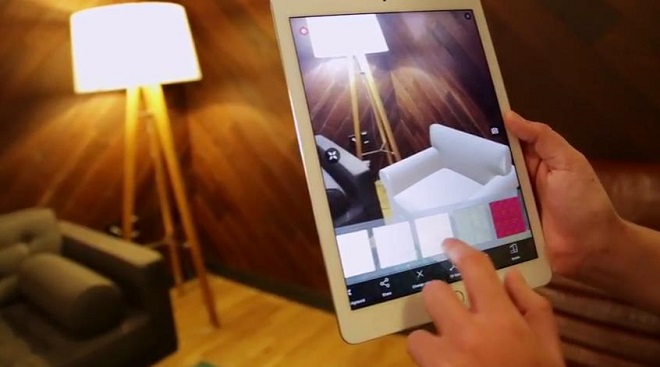The here and now of augmented reality
08-05-2018 | By Mark Patrick
This year may well be the year that augmented reality (AR) comes into its own. Unlike virtual reality (VR), which tends to require very specialized gear, even regular smartphones can use AR technology to enhance what is seen through the handset’s camera.
And there is little doubt that this technological accessibility has accelerated its adoption. AR can also be used with specialized hardware - thereby enhancing its capabilities even further.
AR versus VR
AR melds the real world with virtually superimposed content (including graphics, sounds, smells and haptic feedback). It has a distinct difference from its better-known cousin VR, which instead completely replaces physical reality with a fully computer-generated environment.
AR and VR have both carved a space within the gaming sector. Just as VR uses head-mounted displays and data gloves to bring gamers into virtual worlds, popular AR games use similar hardware to enhance the real world with superimposed objects. HADO lets players wearing head-mounted displays and arm sensors fight each other in real world environments using virtual projectiles and special effects. This sort of specialized hardware is not mandatory though. If you’ve ever used Snapchat or played Pokemon Go, then you’ve experienced the fun that AR can bring to everyday environments.
Tablets and stylish smart glasses are making AR possible for even more use cases - trailblazing an enriched experience where the potential for increased learning, understanding, convenience and enjoyment seem to be endless.
AR - The Next Big Thing
There is a plethora of possibilities that AR holds - in fields as diverse as commerce, business, advertising/marketing and construction/architecture. According to analyst firm IDC, the combined revenue figures that were generated by AR applications reached a total of $471 million in 2017, which represents a more than 260% increase over the $130 million cited in 2016.
The established giants of the tech world, such as Apple, Facebook and Google, have taken notice by dedicating a large proportion of their resources to AR development. They are banking that AR will be a major cash cow for them.
Facebook has acquired more than 10 AR/VR-related companies recently and Google has publicised its commitment to ARCore 1.0, a mobile AR platform. Meanwhile, the AR wearables market, which includes products such as Microsoft’s Hololens and Magic Leap’s AR headsets, is growing as well. Dedicated AR devices are being built smaller, cheaper and more powerful, allowing more people to enter the magical worlds that this new technology can offer.
AR Game Changers
Companies and organizations as large and traditional as General Electric, Mayo Clinic, and the US Navy are pioneering AR in their own ways to reach consumers and other businesses, or make military operations more efficient. For retail applications, users can preview makeup or clothing on themselves, or see how furniture looks in their home. The overlaying of AR objects enables those in construction and architectural fields to have the best sense of how their work will appear when implemented in real life areas - like public spaces and buildings.
In factories, traditional training methods are being put aside as wearable AR devices are developed so that workers can follow superimposed assembly production instructions conveniently within their line of vision. Instead of looking at a textbook and then an assembly line, factory operatives can see context-specific instructions that change as they go through the steps of a process.
Going to the office will take on new meaning with AR office spaces. Logging onto smart glasses will superimpose digital objects layered over the real-world work settings - including apps, bookmarks, digital notes or virtual screens. All anyone else would see as they pass by is a person sitting, typing or making some hand gestures to open and use AR apps.
Consumer AR-rich apps are already here and proving their value. IKEA Place and Amikasa apps can show how furniture looks like in one’s home. Amazon’s AR View follows the same concept, but with various consumer products - such as speakers or LCD TVs. U.S. home improvement retailer Lowe’s has developed an AR app that acts as a virtual tape measure, so users can determine the dimensions of walls and furniture with a smartphone camera.
Augment SDK offers brands and retailers the capability to personalize their customers' shopping experience by embedding AR product visualization into their eCommerce platforms. By ChristinaC. - Own work, CC BY-SA 4.0, Link
Another app called Ink Hunter relies on AR to allow users to preview tattoos on their own body. Even navigation is getting a re-vamp, with Apple’s ARKit allowing turn-by-turn directions via hologram.
The Bigger AR Picture
Today more data is being produced than ever before, and with IoT just around the corner, data levels will grow at an even quicker rate. With every new AR app developed and every new AR headset entering the market there is further potential for us to change the way we communicate, teach children, train staff, as well as how we consume and manage information.
AR bridges the divide between our 2D data and the 3D world around us. Real life is 3D, yet web pages are still set on flat 2D screens. Combining these worlds together does not always translate, as anyone who has used a manual to assemble flat-pack furniture - unsuccessfully - can testify to. But, digital data directly superimposed onto real environments gets rid of the mental barrier that exists between 2D and 3D space. We are just at the beginning. As AR’s potential continues to be unlocked, more will be able to benefit from it. Everyone from travellers, to shoppers, to business people, to students will want to see the world around them differently.
Read More: Now hear this. Hearable tech takes a leap forward


